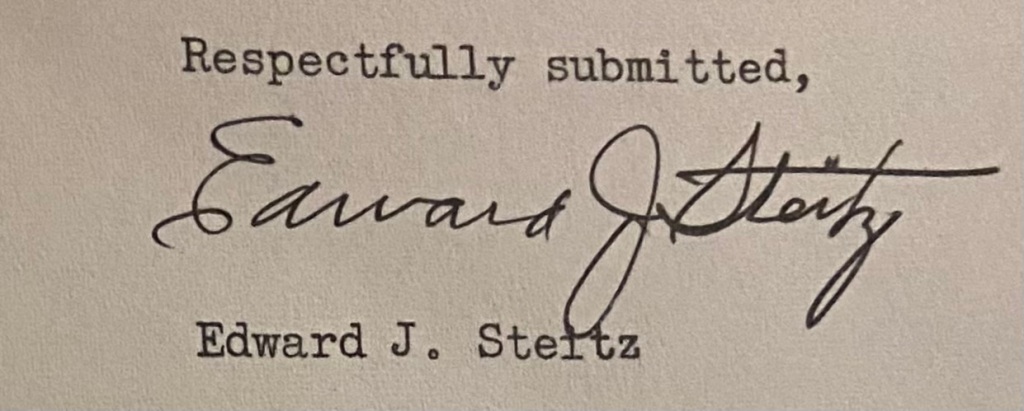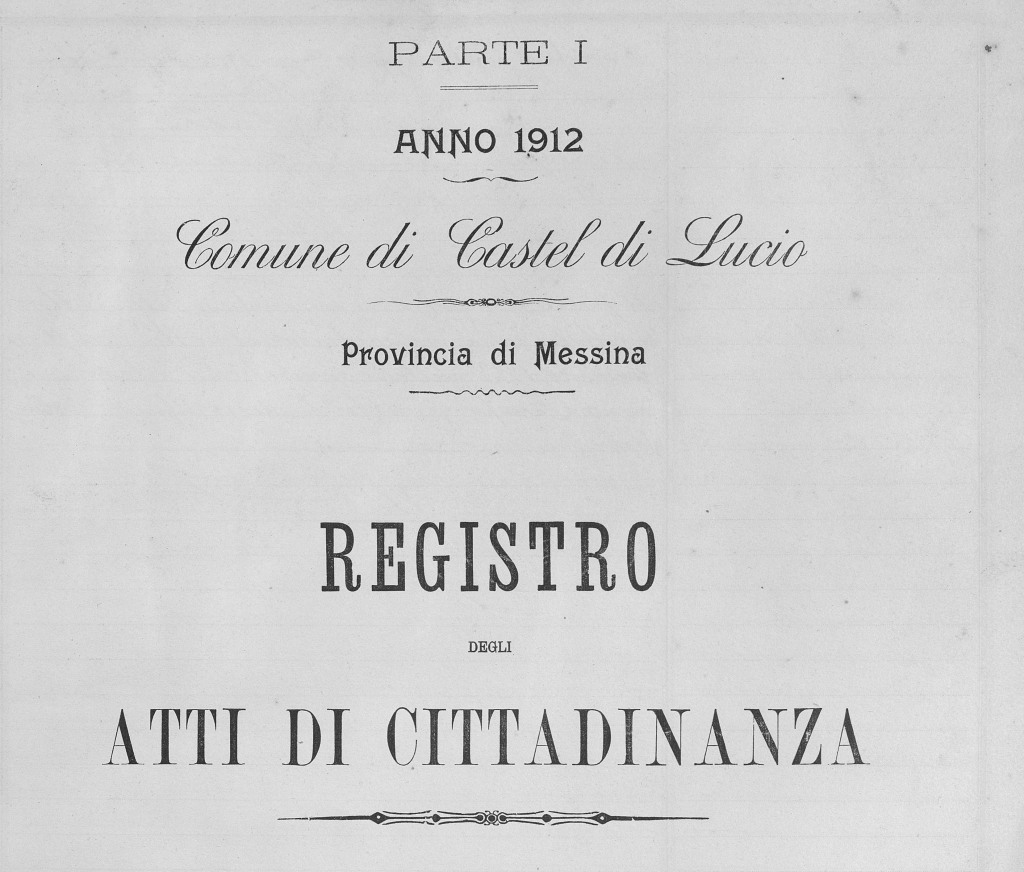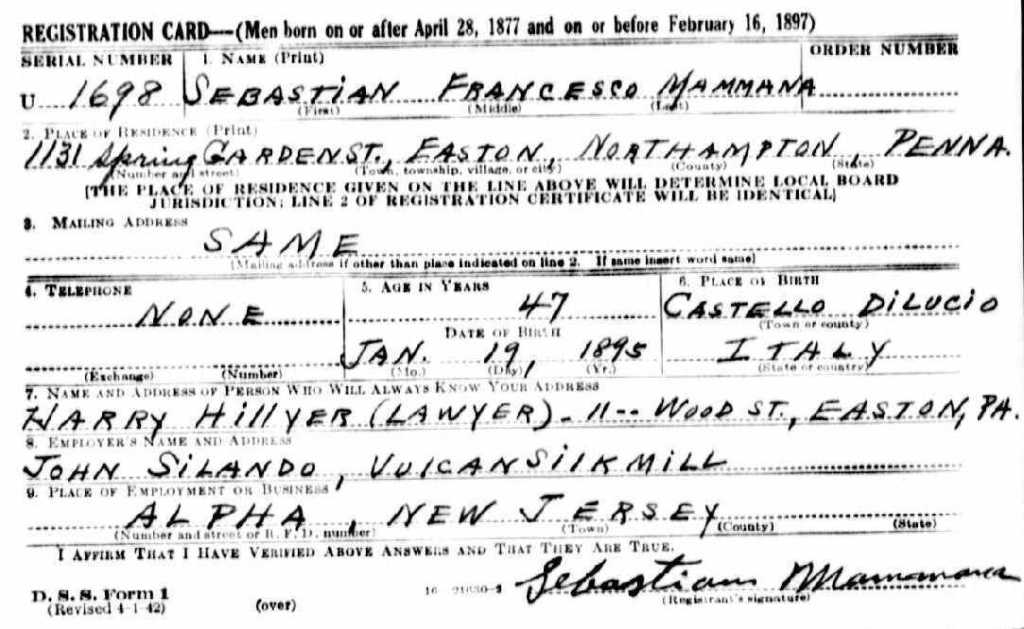Mrs. William Mackey Lovell, the last of the old family of Roseberries living in Phillipsburg, whose death was recently noted, was the daughter of Michael Roseberry, the granddaughter of John Roseberry and the great granddaughter of William Phillips, says the Belvidere APOLLO, and it proceeds to give the following bit of interesting family history.
The only historical mention that we have of William Phillips, is by Matthew S. Henry, in his history of the Lehigh Valley. He says: “the origin of Phillipsburg is not well known, the impression being that it was named after a land owner by the name of Phillips, who resided here at an early day.”
The Phillips referred to by him was William Phillips, who settled in the vicinity of the town of Phillipsburg, prior to the year 1750. He came there by way of Reading, Penn., and belonged to the old family of Phillips, who in Colonial times resided on Long Island, and were among the most prominent of the English families of Colonial New York.
The land where Phillipsburg now stands, was taken up by warrant, from the Proprietors of West Jersey, by William Coxe, a merchant of Philadelphia, who Mr. Henry says, “owned about four hundred and eleven acres, among which were the old fields.” The “old fields” lay just north of the present Delaware wagon bridge, and was an Indian settlement called Chintewink.
William Phillips induced three brothers, Michael, Joseph, and John Roseberry to emigrate from England and settle at Phillipsburg, about 1750 or 1760. These men had considerable wealth and by purchase became the first settlers of the town of Phillipsburg. Michael bought 228 acres and John 200 ½ acres of the William Coxe tract. This comprised the whole of the Coxe tract, except a small portion of land just east of the railroad bridges. This small strip of land was intended for a town and was named Phillipsburg (in an ancient deed called Phillipsborough town) in honor of William Phillips, who was the wealthiest, most prominent and influential person in that locality.
The southern boundary of early Phillipsburg ran along the southern base of the pile of rocks just below the railroad bridges. Just east of the town was a strip of land owned by John Taber Kemp, who, at a later period, became Attorney General of the State of New York.
Michael Roseberry died in the year 1780, leaving a will made in 1772, by which he bequeathed to Catharine, the wife of William Phillips, the sum of fifty pounds, and to each of his eight children the sum of twenty-five pounds; in addition he bequeathed to three of his sons sufficient of his personal estate to buy them land for farms, and then he directs that all his “notes, bonds and obligations” should be collected and put out at interest to the use of his legatees, consisting of the Phillips family and other persons. That part of the Coxe tract, which he owned, descended to his brother Joseph, from whom John purchased it in 1784.
John Roseberry, the grandfather of Mrs. Lovell, thus became the sole owner of the whole Coxe tract, and owned altogether about 1,500 acres, a part of this land extending from Green’s Bridge to the Delaware River and thence to Marble Bridge. He married Margaret, a daughter of William Phillips, and sister of Gen. John Phillips, who is spoken of with Hon. Charles Sitgreaves as “among the citizens most prominent in Phillipsburgh’s early history,” but Gen. John Phillips lived at a much earlier period than the Hon. Charles Sitgreaves.
John Roseberry’s first residence was in a stone dwelling house in the present third ward, built by him. It was the oldest stone building in Phillipsburg. After he had purchased the 226-acre tract of his brother Joseph, he erected the stone dwelling house on the banks of the Delaware River, in the present second ward, and lived there until he died in 1813. This building is over one hundred years old. He had seven children: William Catharine, Hannah, John, Joseph, Henry, and Michael. Hannah married Henry Winter, who located on a large tract of land, which he gave him in Harmony Township. All of his children were given large tracts of land before his death.
To his son John, he gave the 200 ½ acres of the Coxe tract. And on the 18th day of March, 1797, he gave to his son Michael the balance of the Coxe tract of 227 acres, having arrived at age on the 21st day of July 1793. Michael lived in the stone dwelling on the banks of the Delaware River and there Mrs. Lovell was born in 1806. Michael died August 17th, 1849, leaving twelve children.
Michael, as a young man, wore silver spurs, now in the writer’s possession, silver knee buckles, silk stockings and knee breeches of the material as were his other garments. His attendant was a slave boy called Sam. He was tall and broad shouldered, and two paintings show him to have been a fine-looking man. He married a young lady, the daughter of an officer who served in the first New Jersey Regiment in the Revolution. This young lady, at the time of her marriage, was possessed in her own right of 3,000 pounds in money, and her waiting maid was a slave girl called Sally.
That is a pretty good indication of the state of society one hundred years ago. On the other hand, it is curious to note the disposition that the wealthier men made for their widows. A residence, with a saddle horse, and generally twelve pounds in money annually, which upon reflection is not so small an amount as appears, as money in those early times had six times the purchasable value that it has at the present day.
Like the Phillips, Beidlemans, Bullmans, Greens and others, who lived in and about Phillipsburg, the Roseberry family has almost entirely disappeared from that section. Every state in the Union has descendants of this old family. Many of them are in the South and John Roseberry’s descendants are engaged in almost every kind of business occupation and profession.
The following is a copy of the important parts of a letter written by Joseph M. Roseberry, Esq. of Belvidere, N.J. to Mrs. Isabel Alshouse of Easton, Pa., under dates Dec. 15 and 20, 1890.
John Roseberry was the original ancestor in Warren County, N.J. Phillipsburg was settled at an earlier period than Easton. It derives its name from John Phillips, whose daughter (I think her name was Margaret) married John Roseberry who came to Phillipsburg when a young man. As nearly as I can tell, he settled there in 1740, perhaps earlier. John Phillips was a large landowner and besides his daughter, Margaret, had a son, Gen. John Phillips, mentioned in history as a man of great influence and respectability.
John Roseberry had five sons and two daughters:—John, Joseph, William, Michael and Henry and Hannah and Sally. John Roseberry was very wealthy at that period and owned large tracts of land. He gave by deed to my Grandfather Michael (youngest son) two hundred and twenty-eight acres of land when he arrived at the age of twenty-one years. The second, third, and fourth Wards of Phillipsburg are built upon this land. As nearly as I can ascertain, John Roseberry owned nearly fifteen hundred acres in one body, running from the railroad bridges crossing the Delaware River at Phillipsburg up to the farm of Mr. George Brakeley, thence by Uniontown, thence running in a southerly direction for a considerable distance, then again bording westwardly to Greens Bridge and to the Delaware River below the Andover Furnace in Phillipsburg. He gave his daughter Hannah a large tract of land in Harmony Township. It remained in the Winter family nearly one hundred years.
John Roseberry’s son, William, was the grandfather of John W. Roseberry. William Roseberry married a daughter of Joseph Mackey who served during the Revolutionary War as Captain in the First new Jersey Regiment. After the war he was appointed and served as a judge of the Court of Common Pleas of Sussex County, New Jersey, at that time embracing Warren County. Joseph Mackey was of Scotch-Irish origin. He was one of the most wealthy and influential men of the county and owned large tracts of land.
My Grandmother was a daughter of Captain Joseph Mackey (William and Michael married sisters.) My father and Aunt Elizabeth have both told me that she had at the time of marriage to my Grandfather, three thousand pound and had a colored slave as a maid servant. Any way she was a very aristocratic woman.
William Roseberry owned a large tract of land just east of my Grandfather’s. He was wealthy as were all the children of John Roseberry, the original ancestor. They were counted among the wealthiest men in the County. The style of living of our early ancestors was copied after the landed gentry in England. It is unnecessary to say to you anything about Grandfather, but for the benefit of Mr. John W. Roseberry, I will say that I have my Grandfather’s silver spurs made of Mexican silver dollars. They are of delicate workmanship, too much so for hard service, I should think. This I mention solely for the purpose of indicating their manner of living. It was a society eminently aristocratic and intended to perpetuate the system of the landed gentry of England. The original John Roseberry, I have reason to believe, had a brother Michael. Anyway, there was a Michael Roseberry who was not his son. I am not positive as to the nationality of John Roseberry, but without specifying, I have reason to believe they were of Scotch-Irish or Scotch origin. My father who was much with him when a lad thought he was of German origin, but he based this assertion or rather opinion from the fact that he spoke English with a broken accent. Two things are clear: the name is not German, and Roseberry was his name. His family associations seemed to be with the Scotch or Scotch-Irish people. The estates of the Primrose family and the titles “Rosebery” spelled with one “r.” It lies on the border between Scotland and England. The two names are undoubtedly the same,—Mr. Yilfer has charge of Mr. Rutherford Stuyvesant’s estate in this country. As his attorney I know Mr. Yilfer very well. He is a Scotchman from the border between England and Scotland. “They are Scots.” He tells me that the “Roseberies” are numerous in Scotland. They are Scotchmen and live just on the border of England, in Scotland, but they spell their name with one “r” Rosebery, instead of two “Roseberry” as we do.
I noticed that John Roseberry made his mark to my Grandfather’s deed. I suppose he told them to write his name, and they wrote the latter part “berry” instead of “bery” and his descendants supposed that was the correct spelling.




